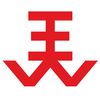HONOLULU (Nov. 9, 2014) -- When it comes to U.S.-China trade, semiconductors are a big deal. The chips that power virtually all modern electronics are one of the United States' most valuable exports at $42 billion a year (second only to auto exports at $51 billion), and China's biggest import at $232 billion - bigger even than oil. But so far, China's own role in semiconductor production and chip design has remained relatively small, despite concerted but flawed efforts by previous Chinese administrations to boost it.
So it was no small matter this past June when the fresh Beijing leadership under President Xi Jinping issued a new set of "Guidelines to Promote National Integrated Circuit Industry Development." The guidelines spell out concrete and ambitious development targets for China's semiconductor industry, with the goal of moving from playing catch-up to forging ahead as an industry leader in integrated circuit (or IC) design and fabrication.
Now noted analyst Dieter Ernst, an economist with the East-West Center in Hawaii, has put out a new study examining the objectives, strategy and implementation policies of China's new push in semiconductors and what they imply for the country's prospects in this key industry.
Ernst's study, From Catching-Up to Forging Ahead? China's Prospects in Semiconductors, explores how China's new strategy seeks to benefit from four global transformations in semiconductor markets and technology: the demand pull from mobile devices; new opportunities for China's factories in trailing-node semiconductor technologies; global changes in the IC fabrication landscape; and a new interest in strategic partnerships and mergers and acquisitions.
The study analyzes two particular policy initiatives of the new Chinese strategy: the IC Industry Support Small Leading Group to enhance strategy coordination, and equity funds to improve investment allocation and enhance firm capabilities through strategic partnerships, joint ventures, and mergers and acquisitions involving both foreign firms and domestic firms.
"The implementation of both policies signals a genuine effort to experiment with a bottom-up, market-led approach to industrial policy," Ernst says. "In the Leading Group, for instance, experts who are knowledgeable and well-connected in the highly globalized semiconductor industry play an active role in policy formulation and implementation."
The use of professional investment fund managers, as opposed to government subsidies or investment programs, signals the emergence of a hybrid model that seeks to combine the logic of equity fund management with the objectives of China's semiconductor development strategy, Ernst writes.
However, his study concludes that, despite movement in the right direction, the new Chinese semiconductor strategy's capacity for flexible policy adjustments remains limited, and that multi-layered industrial dialogues among key stakeholders in the industry are still at an early stage.
"To exploit the tailwinds from the market, China needs to experiment further with new more market-driven approaches to industrial policy," Ernst says.
Download the full study.
